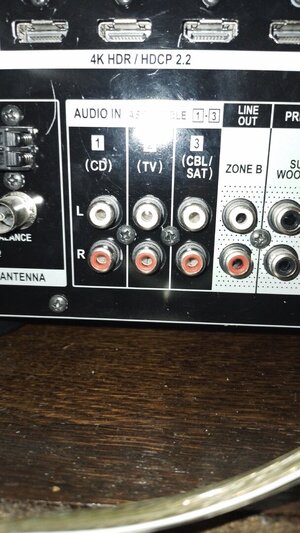Thanks for your response,
I haven't been able to find specific information on which rca plugs are which for my cable, so I've just tried out every combination, none of which have worked so far. I've tried plugging them into each of the 3 rca audio inputs on the reciever in the picture attatched.
Convention says that the colour coding for your cable is:
Black left, red right into the 5-pin plug / socket.
White left, yellow right out of the 5-pin / socket.
However, I've previously had a jack to RCA cable, from that specific brand, that had black and red reversed 🤨 - so nothing can be taken for granted.
Regardless of that, you've tried every combination of the 4 plugs, so something should have worked for you.....BUT that's based on all of the following assumptions:
* The service manual for the Philips model is correct. (I don't think the original poster ever confirmed that).
* You own the identical model.
* Your AV amp is working normally (because any of the inputs in your photo do suit your requirement).
You can (must) confirm the last point by putting the output of a source you know to be working, into one of those Pioneer inputs.
You can at least conclusively confirm your necessary RCA plug pair, by doing "the buzz test" on your Philips:
Plug into the tape socket, select the tape input and turn the Philips volume control around a quarter up. Touch your fingers onto (only) the pins of each plugs.
2 of them should give you the buzz on left & right speaker - proving that they're going into the 5-pin DIN plug / socket.
They're the pair NOT to use.
The other pair are the ones you should be connecting to the AV amp.
If you get no sound - try them into a known working amp......still nothing then you know there is nothing coming out of the Philips DIN.
Fault finding is all about a process of elimination.
Good luck
👍

